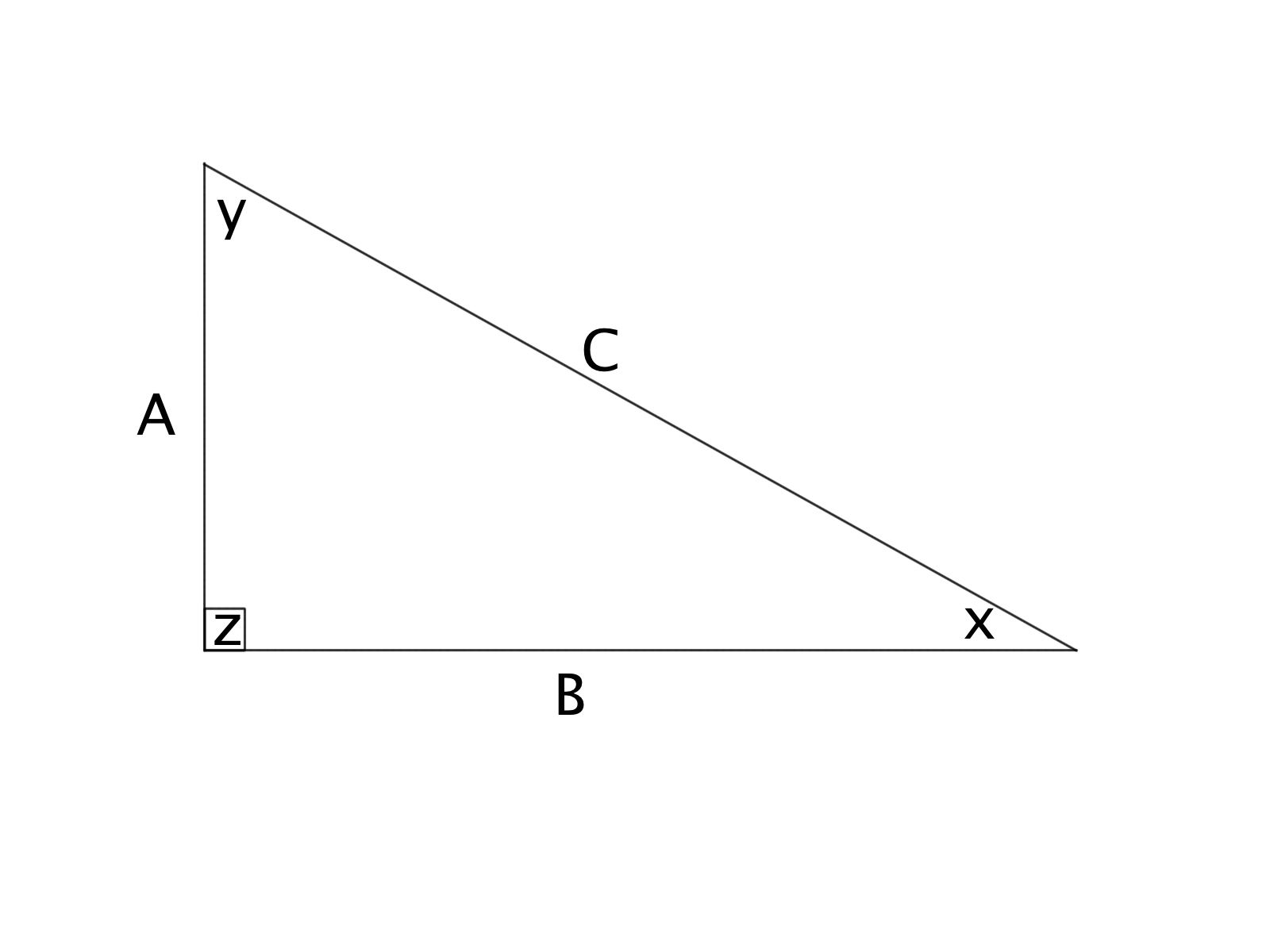All High School Math Resources
Example Questions
Example Question #141 : Triangles

Triangle ABC is a right triangle. If the length of side A = 8 inches and B = 11 inches, find the length of the hypoteneuse (to the nearest tenth).
14.2 inches
13.7 inches
185 inches
13.6 inches
184 inches
13.6 inches
Using the Pythagrean Theorem, we know that 
This tells us:
Taking the square root of both sides, we find that 
Example Question #21 : How To Find The Length Of The Hypotenuse Of A Right Triangle : Pythagorean Theorem

Given:
A = 6 feet
B = 9 feet
What is the length of the hypoteneuse of the triangle (to the nearest tenth)?
10.1 feet
10.2 feet
10.6 feet
10.8 feet
10.5 feet
10.8 feet
Using the Pythagrean Theorem, we know that 
This tells us:
Taking the square root of both sides, we find that
Example Question #141 : Triangles

Given:
A = 2 miles
B = 3 miles
What is the length of the hypoteneuse of triangle ABC, to the nearest tenth?
3.2 miles
3.5 miles
3.4 miles
3.6 miles
3.7 miles
3.6 miles
Using the Pythagrean Theorem, we know that 
This tells us:
Taking the square root of both sides, we find that
Example Question #261 : Triangles
Given that two sides of a right triangle measure 2 feet and 3 feet, respectively, with a hypoteneuse of x, what is the perimeter of this right triangle (to the nearest tenth)?
18 feet
9.4 feet
8.6 feet
3.6 feet
6.4 feet
8.6 feet
Using the Pythagrean Theorem, we know that 
This tells us:
Taking the square root of both sides, we find that
To find the perimeter, we add the side lengths together, which gives us that the perimeter is:
Example Question #172 : Plane Geometry

Example Question #42 : Right Triangles
Kathy and Jill are travelling from their home to the same destination. Kathy travels due east and then after travelling 6 miles turns and travels 8 miles due north. Jill travels directly from her home to the destination. How miles does Jill travel?
Kathy's path traces the outline of a right triangle with legs of 6 and 8. By using the Pythagorean Theorem


Example Question #261 : Triangles
Example Question #411 : Geometry
In order to get to work, Jeff leaves home and drives 4 miles due north, then 3 miles due east, followed by 6 miles due north and, finally, 7 miles due east. What is the straight line distance from Jeff’s work to his home?
2√5
15
10√2
11
6√2
10√2
Jeff drives a total of 10 miles north and 10 miles east. Using the Pythagorean theorem (a2+b2=c2), the direct route from Jeff’s home to his work can be calculated. 102+102=c2. 200=c2. √200=c. √100√2=c. 10√2=c
Example Question #261 : Triangles
Jim leaves his home and walks 10 minutes due west and 5 minutes due south. If Jim could walk a straight line from his current position back to his house, how far, in minutes, is Jim from home?
√10
√5
5√5
6√6
5√5
By using Pythagorean Theorem, we can solve for the distance “as the crow flies” from Jim to his home:
102 + 52 = x2
100 + 25 = x2
√125 = x, but we still need to factor the square root
√125 = √25*5, and since the √25 = 5, we can move that outside of the radical, so
5√5= x
Example Question #71 : Geometry
A square enclosure has a total area of 3,600 square feet. What is the length, in feet, of a diagonal across the field rounded to the nearest whole number?
100
75
95
60
85
85
In order to find the length of the diagonal accross a square, we must first find the lengths of the individual sides.
The area of a square is found by multiply the lengths of 2 sides of a square by itself.
So, the square root of 3,600 comes out to 60 ft.
The diagonal of a square can be found by treating it like a right triangle, and so, we can use the pythagorean theorem for a right triangle.
602 + 602 = C2
the square root of 7,200 is 84.8, which can be rounded to 85
All High School Math Resources










































